 W
WThe Book of Isaiah is the first of the Latter Prophets in the Hebrew Bible and the first of the Major Prophets in the Christian Old Testament. It is identified by a superscription as the words of the 8th-century BCE prophet Isaiah ben Amoz, but there is extensive evidence that much of it was composed during the Babylonian captivity and later. After Johann Christoph Döderlein suggested in 1775 that the book contained the works of two prophets separated by more than a century, Bernhard Duhm originated the view, held as a consensus through most of the 20th century, that the book comprises three separate collections of oracles: Proto-Isaiah, containing the words of the 8th century prophet Isaiah; Deutero-Isaiah, the work of an anonymous 6th-century BCE author writing during the Exile; and Trito-Isaiah, composed after the return from Exile. While virtually no scholars today attribute the entire book, or even most of it, to one person, the book's essential unity has become a focus in more recent research. Isaiah 1–33 promises judgment and restoration for Judah, Jerusalem and the nations, and chapters 34–66 presume that judgment has been pronounced and restoration follows soon. It can thus be read as an extended meditation on the destiny of Jerusalem into and after the Exile.
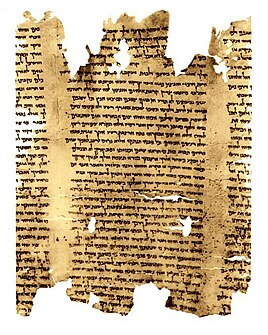 W
W1QIsab is a fragmentary copy of the Book of Isaiah found at Qumran Cave 1 by Bedouin from the Ta'amireh tribe in 1947. It was discovered along with and grouped and sold together with two other Dead Sea Scrolls, the Thanksgiving Hymn and the War Scroll.
 W
WAlmah is a Hebrew word for a young woman of childbearing age; despite its importance to the account of the virgin birth of Jesus in the gospel of Matthew, scholars agree that it has nothing to do with virginity. It occurs nine times in the Hebrew Bible.
 W
WBeulah Land is a well-known gospel song with text by Edgar Page Stites (1836–1921) and music by John R. Sweney (1837–1899). Stites's work dates from 1875 or 1876; the tune — which is listed in hymnals under either of two variants of the incipit: I’ve Reached the Land of Corn and Wine (original) or I’ve Reached the Land of Joy Devine — was written in 1876. The song concludes with the chorus:O Beulah land, sweet Beulah land! As on thy highest mount I stand, I look away across the sea Where mansions are prepared for me And view the shining glory shore My heaven, my home forever more.
 W
WCyrus II of Persia commonly known as Cyrus the Great, and also called Cyrus the Elder by the Greeks, was the founder of the Achaemenid Empire, the first Persian Empire.
 W
WThe Fall of Babylon denotes the end of the Neo-Babylonian Empire after it was conquered by the Achaemenid Empire in 539 BCE.
 W
WThe fiery flying serpent is a creature mentioned in the Book of Isaiah in the Hebrew Bible or in the Old Testament of the Christian Bible.
 W
WImmanuel is a Hebrew name which appears in the Book of Isaiah (7:14) as a sign that God will protect the House of David.
 W
WIsaiah 7:14 is a verse in the seventh chapter of the Book of Isaiah in which the prophet Isaiah, addressing king Ahaz of Judah, promises the king that God will destroy his enemies; as a sign that his oracle is a true one, Isaiah says that a specific almah has conceived and will bear a son whose name will be Immanuel, "God is with us", and that the threat from the enemy kings will be ended before the child is weaned. The author of the gospel of Matthew used it to suggest that Jesus was born to a parthenos, a virgin.
 W
WLeviathan is a creature with the form of a sea serpent from Jewish mythology. It is referenced in several books of the Hebrew Bible, including Psalms, the Book of Job, the Book of Isaiah, and the Book of Amos; it is also mentioned in the apocryphal Book of Enoch.
 W
WLight to the nations is a term originated from the prophet Isaiah which may express the universal designation of God's kingdom of priests as a mentor for spiritual and moral guidance for the entire world.
 W
W"The lamb with the lion" – often a paraphrase from Isaiah, and more closely quoted as "the lion and lamb", "a child will lead them", and the like – are an artistic and symbolic device, most generally related to peace.
 W
WLucifer is the name of various mythological and religious figures associated with the planet Venus. Due to the unique movements and discontinuous appearances of Venus in the sky, mythology surrounding these figures often involved a fall from the heavens to earth or the underworld. Interpretations of a similar term in the Hebrew Bible, translated in the King James Version as the proper name "Lucifer", led to a Christian tradition of applying the name Lucifer, and its associated stories of a fall from heaven, to Satan, but modern scholarship generally translates the term in the relevant Bible passage as "morning star" or "shining one" rather than as a proper name, "Lucifer".
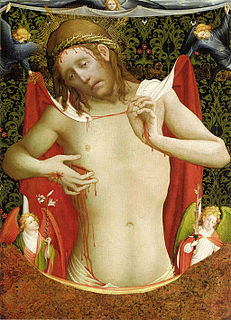 W
WMan of Sorrows, a Biblical term, is paramount among the prefigurations of the Messiah identified by the Bible in the passages of Isaiah 53 in the Hebrew Bible. It is also an iconic devotional image that shows Christ, usually naked above the waist, with the wounds of his Passion prominently displayed on his hands and side, often crowned with the Crown of Thorns and sometimes attended by angels. It developed in Europe from the 13th century and was especially popular in Northern Europe.
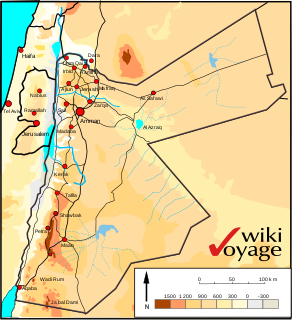 W
WMount Seir is the ancient and biblical name for a mountainous region stretching between the Dead Sea and the Gulf of Aqaba in the northwestern region of Edom and southeast of the Kingdom of Judah. It may also have marked the older historical limit of Ancient Egypt in Canaan. A place called "Seir, in the land of Shasu", thought to be near Petra, Jordan, is listed in the temple of Amenhotep III at Soleb.
 W
WSargon II was the king of the Neo-Assyrian Empire from the downfall of his predecessor Shalmaneser V in 722 BC to his death in battle in 705 BC. Though Sargon claimed to be the son of the previous king Tiglath-Pileser III, this is uncertain and he probably gained the throne through usurping it from Shalmaneser V. Sargon is recognized as one of the most important Neo-Assyrian kings due to his role in founding the Sargonid dynasty, which would rule the Neo-Assyrian Empire until its fall less than a century after Sargon's death.
 W
WA seraph is a type of celestial or heavenly being originating in Ancient Judaism. The term plays a role in subsequent Judaism, Christianity, and Islam. The singular "seraph" is a back-formation from the Hebrew plural-form "seraphim", whereas in Hebrew the singular is "saraph".
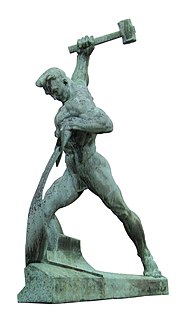 W
WSwords to ploughshares is a concept in which military weapons or technologies are converted for peaceful civilian applications.
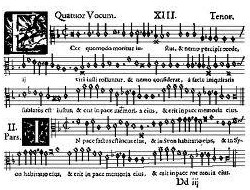 W
WThe righteous perishes are the words with which the 57th chapter of the Book of Isaiah starts. In Christianity, Isaiah 57:1–2 is associated with the death of Christ, leading to liturgical use of the text at Tenebrae: the 24th responsory for Holy Week, "Ecce quomodo moritur justus", is based on this text. More generally, the text is associated with the death of loved ones and is used at burials. As such, and in other versions and translations, the Bible excerpt has been set to music.
 W
WThe Tree of Jesse is a depiction in art of the ancestors of Christ, shown in a tree which rises from Jesse of Bethlehem, the father of King David and is the original use of the family tree as a schematic representation of a genealogy. It originates in a passage in the biblical Book of Isaiah which describes metaphorically the descent of the Messiah, and is accepted by Christians as referring to Jesus. The various figures depicted in the lineage of Jesus are drawn from those names listed in the Gospel of Matthew and the Gospel of Luke.